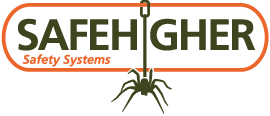Category: Rooftop Walkways
When Seeking to Prevent Falls, What Should Priority Be Given To?
Falls from height are a leading cause of workplace injuries and fatalities across many industries. Ensuring worker safety should always be a top priority, especially for those who regularly operate in environments where the risk of falling is high. At Safe Higher Safety Systems, we understand that fall prevention goes beyond compliance; it is about […]
Read more...Addressing Common Work-at-Height Hazards: Strategies for Prevention and Mitigation
In any workplace, safety is paramount, especially when it comes to tasks performed at heights. Whether it’s construction, maintenance, or any other industry, working at height poses significant risks that must be addressed effectively. In the UK, regulations such as the Work at Height Regulations 2005 provide a framework for employers and employees to manage […]
Read more...Staying Safe and Secure at Work with Rooftop Walkways and Ladder Fall Protection Systems
In the world of construction and maintenance, safety should always come first. When it comes to working on high buildings, rooftop walkways and ladder fall protection systems play a crucial role in ensuring the well-being of workers. Let’s delve into what these safety solutions are and explore the numerous benefits they offer. Rooftop Walkways These […]
Read more...